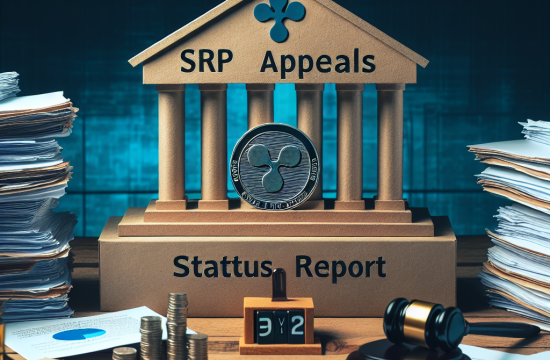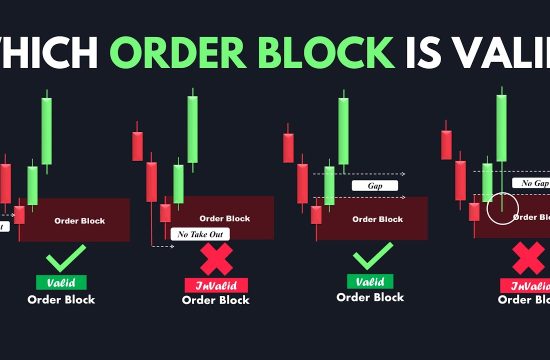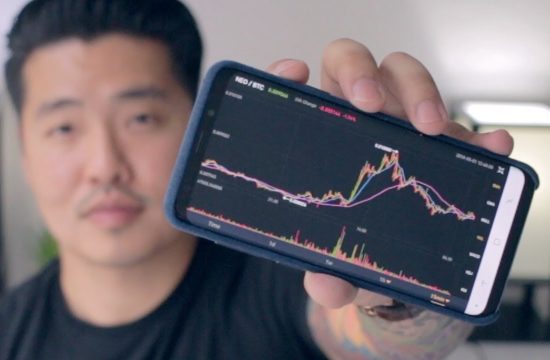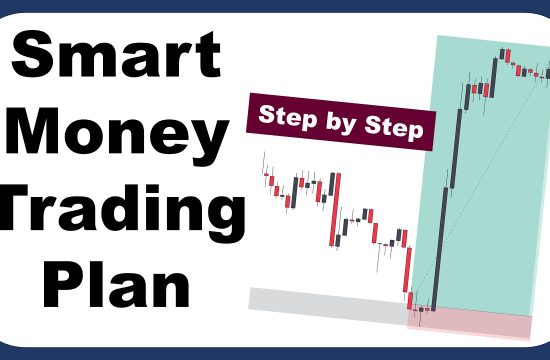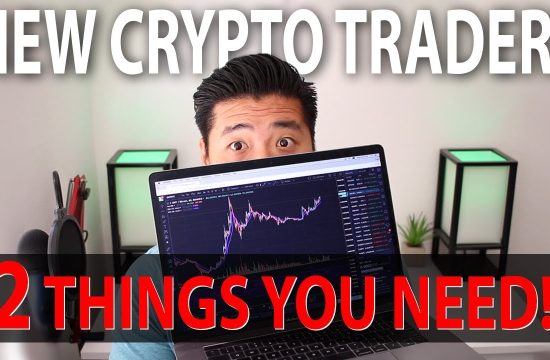1. Lack of Research and Education
Know Your Stuff
When I first jumped into Bitcoin trading, I was so excited that I didn’t take the time to educate myself. I thought I could just figure it out as I go, and let me tell you, that was a huge mistake. I quickly learned that understanding market trends, the underlying technology, and the economics behind Bitcoin is crucial. Knowledge is power, and in Bitcoin trading, it can literally save you from losing a fortune.
There are so many resources out there—books, online courses, and even podcasts—that can help you grasp the basics and advanced concepts. I recommend starting with a few reputable websites that cover Bitcoin and cryptocurrency education. You’ll gain insights on everything from price patterns to regulation and security—which are all vital for making sound trading decisions.
Don’t forget about the importance of learning how to distinguish between hype and actual market signals. The crypto space is filled with influencers who might lead you astray with their opinions if you’re not careful. Taking the time to research will pay off in the long run.
Understanding Market Sentiment
Market sentiment plays a massive role in the crypto world. When I began trading, I often neglected the emotional aspect of trading, thinking it was all about charts and data. However, understanding how market sentiment impacts price movements is critical. Social media, news events, and discussions in forums can all affect the market’s emotional state.
Diving into sentiment analysis tools and resources can help you gauge what the market is feeling at any given moment. I like to check platforms like Twitter and Reddit to see what the general vibe is around Bitcoin trades. Even small news items can cause significant shifts, so staying updated and in tune with the community is a smart move.
Remember, trading under the influence of fear or greed can lead to rash decisions. By cultivating a solid understanding of market sentiment, you can make more informed and rational trade choices that align with your strategy.
Continuous Learning and Adaptation
The crypto landscape is ever-evolving. What worked yesterday might not work today, so it’s vital to keep learning. I’ve made it a personal goal to dedicate some time each week to read articles and watch educational videos on Bitcoin trading strategies. This ongoing education keeps me fresh and adaptable.
Joining online communities of traders can also be hugely beneficial. Sharing experiences and strategies with others has opened my eyes to new perspectives that I hadn’t considered before. You can learn from both their successes and mistakes, which can save you the hassle of trial and error.
Lastly, don’t shy away from exploring new trading strategies. As I’ve learned more, I’ve integrated various techniques that work best for my trading style. Be open to adjusting your approach based on new information. It’s not about sticking to the old ways; it’s about growing and evolving.
2. Emotional Trading
Recognizing Emotional Triggers
Let me tell you, emotional trading can wreck your portfolio faster than a bad trade. At first, I didn’t realize just how much my feelings—be it excitement or fear—could impact my decisions. Once I started recognizing my emotional triggers, I was able to take a step back and evaluate my trades more rationally.
If you feel like you’re making decisions based on fear of missing out (FOMO) or panic, take a moment. Step away from the charts, breathe, and remind yourself of your trading plan. Ask yourself whether your decisions align with your strategy or if they’re purely emotion-driven.
Tracking your emotions while trading can also help identify patterns in your behavior. I keep a trading journal where I note not only the trades I make but also how I felt at that moment. This practice allows me to spot trends and adjust to ensure I don’t fall into the emotional trap again.
Setting Up a Trading Plan
One of the best decisions I’ve made was to create a solid trading plan. This is like having a roadmap that keeps me on track, especially when emotions start to run high. A good trading plan incorporates your risk tolerance, profit goals, entry and exit rules, and how much time you can dedicate to trading.
With a defined plan, I find it easier to stick to my strategy and avoid last-minute impulsive trades. It’s like having a buddy to keep me in check. If a trade doesn’t meet the criteria outlined in my plan, I’ve learned to walk away. It’s not easy, but it’s become a crucial discipline.
Make sure to review and adjust your plan regularly, too. As I gain more experience and as the market conditions change, I tweak my plan to reflect my growing knowledge and skill set. This continual refinement gives me more confidence and helps me remain disciplined.
Practicing Patience
Ah, the virtue of patience—so easier said than done! Many times, I found myself overtrading, thinking every slight market movement was an opportunity. What I’ve learned the hard way is that patience is key in any investing journey, especially in something as volatile as Bitcoin.
Sometimes, the best action is no action at all. If the signals don’t line up with your strategy, don’t force a trade. I now have a self-imposed rule that if a trade doesn’t feel right according to my analysis, I let it go. I’ve discovered that the market offers plenty of opportunities; no need to jump on every single one.
Develop a sense of timing and learn to wait for your setups. I’ve found that the best trades often come after being patient and disciplined rather than rushing in because I felt like I “had” to trade. This mentality has significantly improved my trading success rate.
3. Poor Risk Management
Understanding Leverage
When I first got into Bitcoin trading, the allure of leverage was tempting. However, I quickly learned that while using leverage can amplify gains, it can also amplify losses. Many new traders jump into leveraged trading without grasping the full implications, and it can lead to devastating results.
Before jumping into leveraged trades, take the time to understand how margin works and how much capital you’re willing to risk. I set strict limits on how much I would leverage my trades, ensuring that it aligns with my overall risk management strategy.
Using leverage can be part of a solid trading strategy, but it’s not for the faint-hearted. I advise starting with lower leverage until you’re more comfortable and experienced. Mind your risk; your future self will thank you for it.
Setting Stop-Loss Orders
One of the most significant lessons I’ve learned in trading is the importance of using stop-loss orders. These handy tools help mitigate losses and protect your capital. When I first started, I was too confident in my trades and often neglected to set stops, which resulted in much larger losses than I’d imagined.
No matter how strong a trade may seem, setting a stop-loss order gives you a safety net. I now make it a habit to set my stop-loss before entering a position. It’s like giving yourself permission to exit the trade if it doesn’t go as planned. This way, I can focus on making more rational decisions instead of letting emotions dictate my next move.
Reviewing and adjusting your stop-loss levels based on the trade’s performance is also key. As I gain more confidence in a trade, I might adjust my stop-loss higher to secure profits while still allowing for growth. This flexibility has been crucial in protecting my investments.
Diversification of Investments
Don’t put all your eggs in one basket! Diversification is a lesson I learned early on. While Bitcoin is fantastic, it’s wise to explore other cryptocurrencies and investment options. Not only does this strategy minimize risk, but it also opens you up to potential opportunities in different markets.
When I started diversifying, I began exploring altcoins, which can sometimes offer higher returns than Bitcoin. However, it’s important to research any new investment thoroughly—just because it isn’t Bitcoin doesn’t mean it’s automatically a good deal. Spending time analyzing trends and fundamentals of other cryptocurrencies can help me make informed choices.
Investing in different types of assets—like stocks or precious metals—can also provide a cushion against volatility in the crypto market. By spreading my risk, I’ve been able to navigate difficult market changes without too much fear. Incorporating a diversified investment strategy into my plans has turned out to be one of my best decisions.
4. Ignoring Security Practices
The Importance of Wallets
When I first started trading, I didn’t fully grasp the importance of using secure wallets. I kept most of my Bitcoin on exchanges, thinking it was safe enough. Then came the day I woke up to find out that major security breaches were happening in the crypto exchange world. That moment was a massive wake-up call.
Now, I use cold wallets—hardware wallets that keep my crypto offline. It might feel like a hassle at first, but this added layer of security is priceless. With a cold wallet, I’m not at the mercy of exchange security; instead, I’m meticulously safeguarding my investment.
Additionally, always back up your wallet keys. Losing access to your wallet can mean losing access to your funds forever. I keep multiple copies in secure locations to preserve that peace of mind. It’s a little extra work, but it is so worth it!
Two-Factor Authentication
Another security measure I swear by is enabling two-factor authentication (2FA) for any platform I use. This adds an extra layer of security to my accounts, making it even harder for unauthorized access to occur. I remember being resistant initially because it felt like an inconvenience, but trust me, the added security justifies that bother.
Whenever possible, I use apps like Google Authenticator instead of SMS-based 2FA. SMS can sometimes be vulnerable to attacks, whereas authenticator apps provide an extra layer of protection. Just make sure to keep recovery codes in a secure place in case you lose access to your device.
Security should never be an afterthought. Spending a little time to secure your accounts gives you a mental edge to focus on trading rather than worrying about hacks or breaches.
Recognizing Phishing Attacks
Ah, the world of phishing—it’s a playground for scammers, and I’ve had my close calls. Just recently, I almost fell for a fake email that looked like it came from a legitimate exchange, asking me for sensitive information. Thankfully, my newfound vigilance saved me from that nasty trap.
Always double-check the source of emails or messages claiming to be from exchanges. Look closely at the email addresses, and never click on suspicious links. If in doubt, go directly to the exchange’s website—for transactions or inquiries, always access your accounts directly without following links found in emails.
Educate yourself on the signs of phishing attacks. The more aware you are, the lesser the chance you’ll fall victim to these scams. The crypto world is flourishing, but so are the scammers targeting new traders. Stay smart, stay safe.
5. Chasing Losses
The Illusion of Quick Fixes
I think we’ve all been there; after a loss, the temptation to chase it down with a quick, high-risk trade is real. When I first started out, I thought that one solid trade could make up for earlier mistakes. Spoiler alert: it rarely works out that way, and I ended up losing even more.
Chasing losses can lead to risky decisions where you abandon your well-thought-out strategies and make trades dictated by emotion. Instead of recovery, think of it as a trap that pulls you deeper into a hole. I learned that sometimes the best course of action is to step back and reassess the situation rather than force another trade.
Sit with your losses for a moment. Evaluate what went wrong with your strategy and learn from it rather than trying to make quick cash back. It takes discipline, but stepping back has saved me from many regrettable trades.
Implementing a “Walk-Away” Strategy
Developing a “walk-away” strategy has been a game-changer for me. After facing significant losses or when the market feels too emotional, I set strict limits on my trade activity. If I hit that limit, I take a break—sometimes for a day or two, sometimes longer.
This ensures that I don’t act out of desperation or frustration. During these breaks, I assess my trading plan and the overall market conditions without making any hasty decisions. I’ve sometimes come back to find that the market has corrected itself, and I’m now in a much wiser position.
Walking away also allows me to regroup emotionally. Let’s be real; trading can be draining, and it’s essential to maintain a healthy mindset to make the best decisions. Give yourself that break; it can make all the difference.
Focusing on Long-Term Goals
Building a long-term investment strategy is key. Rather than fixating on every minor trade and market fluctuation, I’ve shifted my perspective to focus on the bigger picture. I’ve learned to view Bitcoin trading as part of a long-term financial journey rather than a series of quick wins.
Having clear long-term goals allows me to ride out the inevitable volatility. I often set milestones for myself, whether that’s a target portfolio balance or a particular project in the crypto space I want to dive into. This outlook reminds me that it’s about building wealth over time, not getting rich overnight.
Market fluctuations are normal, and instead of stressing over small losses, I concentrate on my plan and remain patient. Having a goal in mind has turned Bitcoin trading into a much more enjoyable experience rather than a frantic rollercoaster ride.
Frequently Asked Questions
1. What are the most common mistakes in Bitcoin trading?
Many traders fail to do sufficient research, allow emotions to dictate their trades, ignore risk management practices, neglect security, and chase losses without developing a long-term strategy.
2. How can I better educate myself about Bitcoin trading?
Start by reading books, taking online courses, following reputable news sources, and joining forums or online communities dedicated to cryptocurrency to learn from others.
3. How do I create an effective trading plan?
Evaluate your goals, set trading rules around entry, exit, and risk management, and remember to review and adjust your plan as your skills and the market evolve.
4. What security practices should I adopt in Bitcoin trading?
Use secure wallets, enable two-factor authentication, back up important information, be cautious of phishing scams, and do regular security assessments of your trading accounts.
5. How important is it to keep a trading journal?
A trading journal is extremely important as it helps you track your trades, analyze your performance, and reflect on your emotional state during trades to improve your future decision-making.
Related Content
- CRYPTO ALERT: I JUST FOUND SOMETHING…
- Bitcoin Price Watch: Bearish Patterns Emerge as Volume Declines
- Argentina to Patrol Cyberspace in the Hunt for Crypto Criminals
- Essential Tips for Profitable Bitcoin Trading
- Machankura’s Noelyne Sumba Discusses The Power Of Putting Bitcoin On Africa’s Feature Phones





